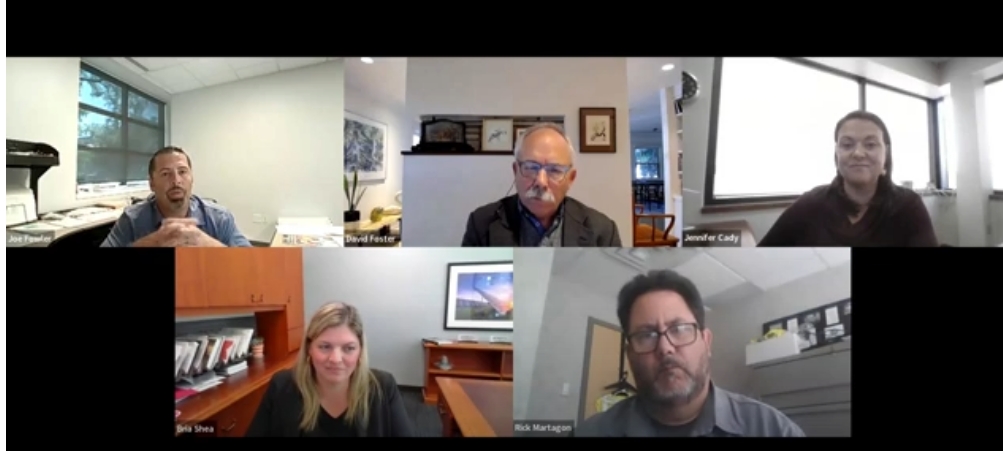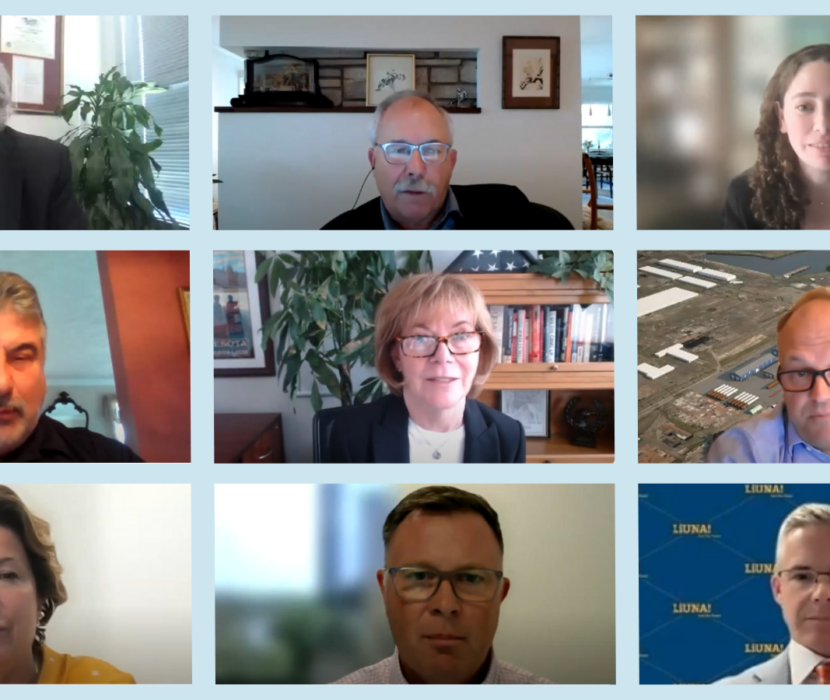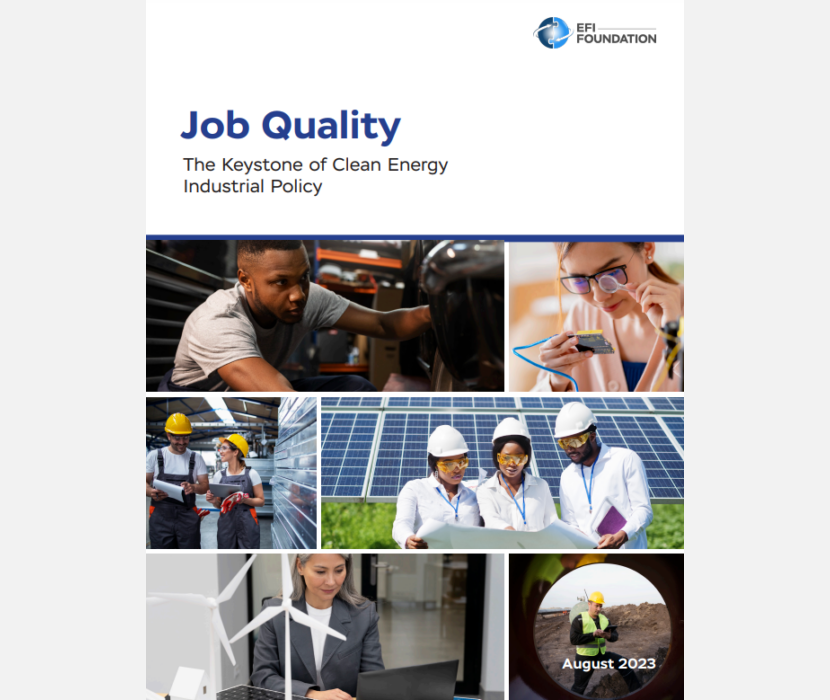
The 2022 Inflation Reduction Act (IRA) set aside the most substantial provisions for clean energy ever passed into U.S. law. These have been delivered through a combination of tax credits, loans, grants and other incentives that are intended to support large-scale decarbonization while fostering job growth and the return of domestic manufacturing.
Ongoing research at the EFI Foundation (EFIF) on the IRA’s impact outlines avenues for leveraging the clean energy transition to address wage inequality and strengthen workers’ rights. The IRA and related legislation offer unprecedented chance to address rising economic inequality and speed the adoption of clean energy technologies, all while building a more secure and prosperous futures for American families.
The greater Midwest has become one of the IRA’s most notable success stories, where a pairing of pro-labor policies with the IRA’s provisions is ushering in a new wave of job growth under which policymakers, industry, and local unions have matched technical innovation with economic revival.
At an EFIF webinar on October 2, local officials, union leaders, and industry executives outlined their work in ensuring the clean energy transition produces a corresponding bounty of high-quality, family-supporting jobs.
In opening remarks, EFIF CEO Ernest J. Moniz emphasized that the clean energy transition requires a focus “on social equity, which includes the needs of workers and communities”. Moniz also noted that EFIF analysis forecasted that “by 2030, the IRA will have produced one and a half million jobs.”
In a subsequent fireside chat with Moniz, Minnesota state policymakers outlined how the IRA’s provisions have translated to the intended outcomes of job growth and economic revitalization throughout the Midwest, a region that has been especially hard-hit by the offshoring of American manufacturing.
Minnesota Assistant Commissioner of Commerce Pete Wyckoff summarized this as, “The IRA is doing what it is largely designed to do, that is provide incentives to speed the clean energy transition while onshoring supply chains needed to rebuild our manufacturing economy.”
One of the main concerns among Midwestern state officials is that the transition to clean energy could have an economically displacing effect among coal and oil workers similar to that seen previously in the manufacturing sector. Combined with a focus on cost-of-living concerns, particularly around affordable electricity, this has guided local utility and labor policy.
Chair of the Minnesota Public Utilities Commission Katie Sieben emphasized that Minnesotan officials have worked to bring union labor into the clean energy sector to ensure job security is upheld: “We’ve seen utility-scale solar projects that invested in the local economy that hired union workers to build these projects that help lower electricity rates. There’s also a big effort for wind repowering that helped drive economic development during the midst of the COVID pandemic when those jobs were really needed,” she said.
In a roundtable discussion with EFIF Association Dave Foster, representatives from industry and labor outlined the positive outcomes that investment in clean energy is providing to Midwestern workers.
Joe Fowler, business manager at the Laborer’s International Union of North America (LIUNA) emphasized the importance of job stability in the construction sector, which the IRA has shored up by supporting workforce transition programs as fossil fuel investment decreases: “It’s not necessarily common for folks in the construction industry to go to the same job everyday at the same location. That is a benefit folks that are currently working at fossil facilities may not continue to have … But there are new job opportunities for people who have been retrained, and that’s what we’re aiming for,” Fowler said.
Midwestern labor organizations have focused on partnering with apprenticeship programs to facilitate the transition of both trained and untrained workers into work on renewable energy projects.
Rick Martagon, executive director of Building Strong Communities Program, works to develop these partnerships with the Joint Apprenticeship Training Centers, which he described as “a statewide program… so [workers] have a chance to experience four to six weeks of hands-on experiences so they can get a full immersion into the industry. We deliver a curriculum that gives them an opportunity to learn about every single one of the trades.”
Industry representatives noted that their partnerships with both government and labor have been instrumental in ensuring that private industry has the support necessary to invest in clean energy projects. Bria Shea, regional Vice President of Regulatory Policy at Xcel Energy, highlighted that the Minnesota Public Utilities Commission has been a strong partner in this process: “The Commission asked utilities to bring forward projects that would drive investment and create jobs in the state. Xcel Energy saw that opportunity, and we brought forward nearly $3 billion worth of investments and 1000s of jobs across 11 projects. Among those projects were several the wind repowering projects along with a labor training program,” Shea said.
These partnerships across policymakers, industry, and labor help ensure that workforce support and training meets the demand for manpower in the clean energy sector, as well as support economic liftoff where investments in clean energy projects pay dividends for both local job security and economic productivity. This has also been vital for allowing private industry to decarbonize its own operations.
Jennifer Cady, Vice President of Regulatory and Legislative Affairs at Minnesota Power, noted that this has become a core component of operational planning across Midwestern industry: “We’ve moved from a generation portfolio that was 95% coal in 2005 to one that is the most renewable in the state today. … At Minnesota Power, we strongly believe that an energy transition that leaves behind customers and communities is neither just nor sustainable. So the how of the energy transition is really critical to us as we find ways to reinvest in our communities.”
– Adam Patterson, Communications Associate
(Share this post with others.)




